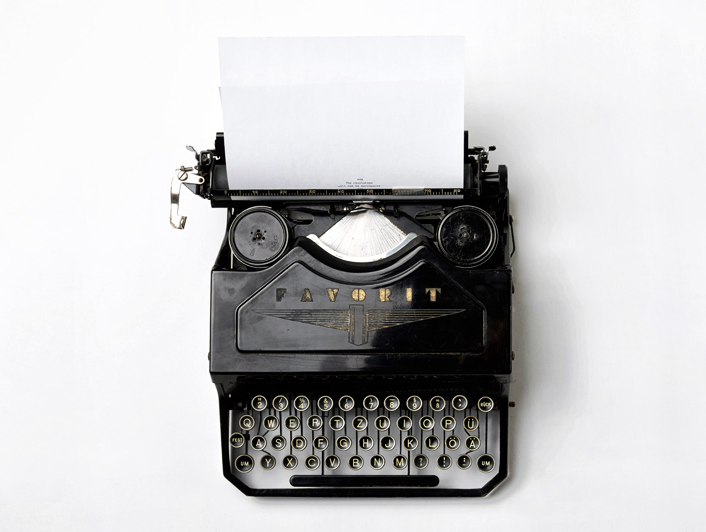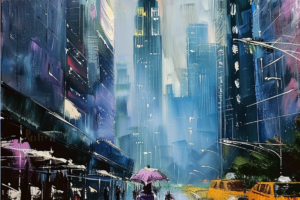If you’ve been dreading writing your artist statement, you’re not alone. Although you love working on your artwork, coming up with an artist statement isn’t always easy.
But don’t fear! I’ll share some examples of famous artist statements here. Plus, I’ll walk you through how to write your own artist statement, what to include, and what to skip.
So, let’s get started!
10 Excellent Artist Statement Examples
Here are ten great artist statement examples you can use for inspiration! Looking at good artist statements can help you decide what to include in your own. But don’t feel like you should copy a sample artist statement – remember to make it unique and personal!
1. Wassily Kandinsky
“I let myself go. I thought little of the houses and trees, but applied color stripes and spots to the canvas… Within me sounded the memory of the early evening in Moscow – before my eyes were the strong, color-saturated scale of the Munich light and atmosphere, which thundered deeply in the shadows.”
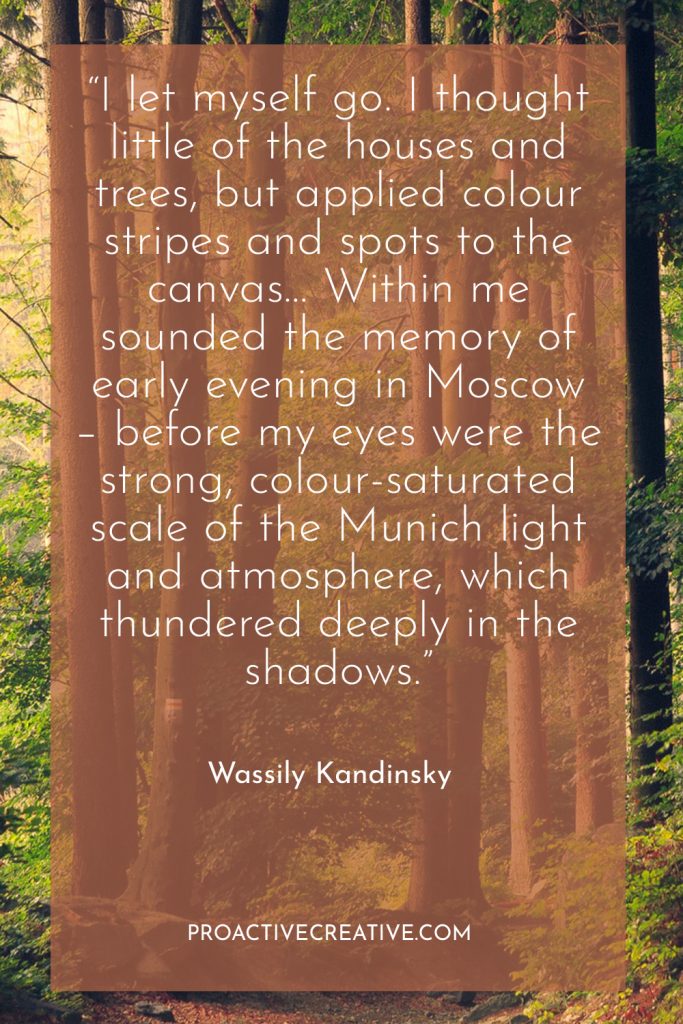
2. Gustav Klimt
“I have never painted a self-portrait. I am less interested in myself as a subject for a painting than I am in other people, above all women… There is nothing special about me. I am a painter who paints day after day from morning to night… Whoever wants to know something about me… ought to look carefully at my pictures.”
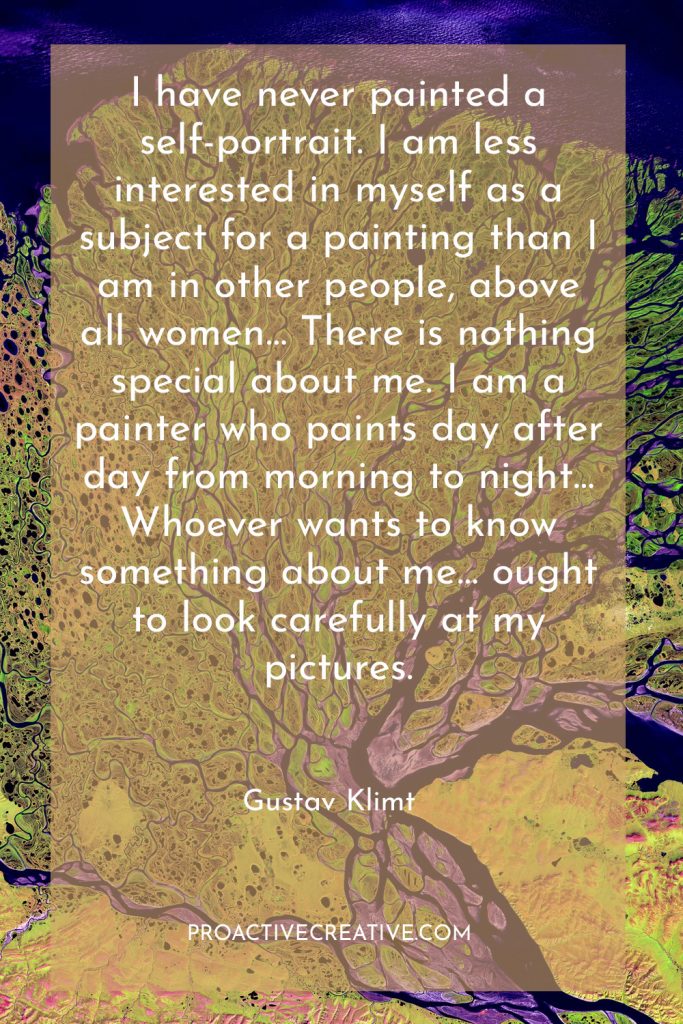
3. Mark Rothko
“I’m not interested in relationships of color or form or anything else. I’m interested only in expressing basic human emotions – tragedy, ecstasy, doom, and so on – and the fact that lots of people break down and cry when confronted with my pictures shows that I communicate those basic human emotions… The people who weep before my pictures are having the same religion I had when I painted them.”

4. Edvard Munch
“I was walking along a path with two friends – the sun was setting – suddenly the sky turned blood red – I paused, feeling exhausted, and leaned on the fence – there were blood and tongues of fire above the blue-black fjord and the city – my friends walked on, and I stood there trembling with anxiety – and I sensed an infinite scream passing through nature.”
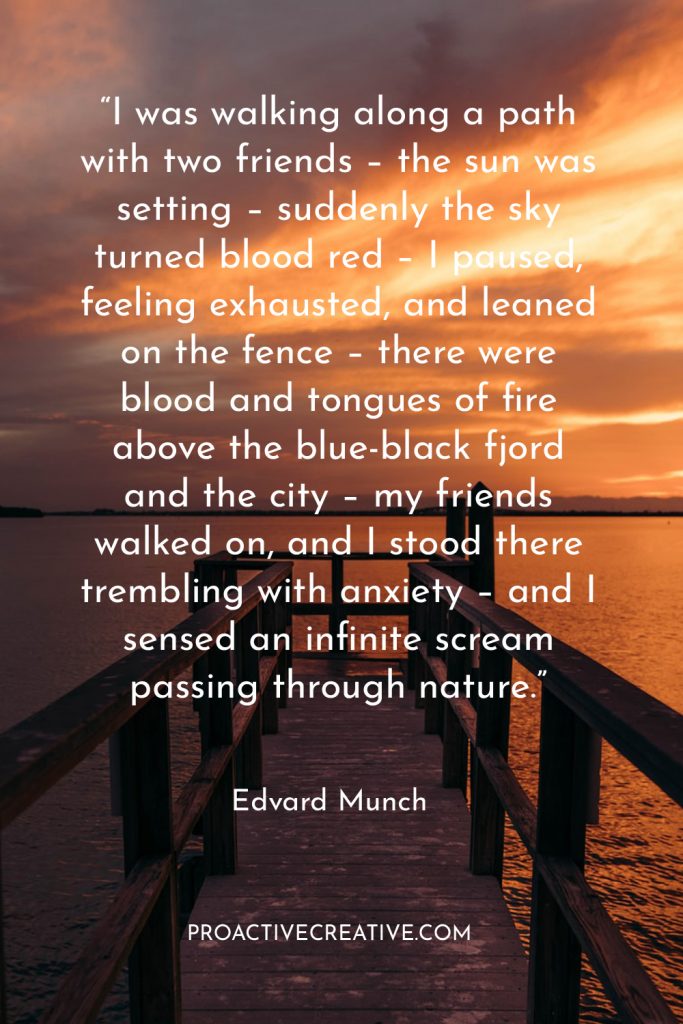
5. Pablo Picasso
“I have never made trials or experiments. Whenever I had something to say, I have said it in the manner in which it needed to be said… I can hardly understand the importance given to the word “research” in connection with the modern painting. In my opinion to search means nothing in painting. To find is the thing.”
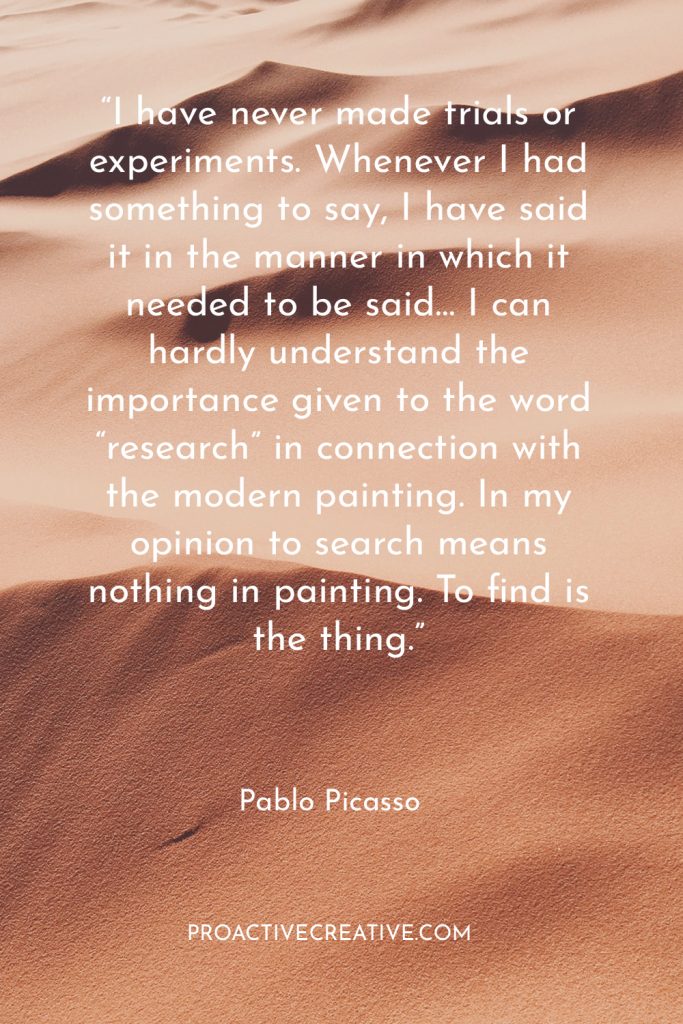
6. Jackson Pollock
“I want to express my feelings rather than illustrate them. It doesn’t matter how the paint is put on, as long as something is said. On the floor, I am more at ease. I feel nearer, more part of the painting, since this way I can walk around it, work from the four sides and literally be in the painting. When I’m painting, I’m not aware of what I’m doing. It’s only after a get-acquainted period that I see what I’ve been about. I’ve no fears about making changes for the painting has a life of its own.”
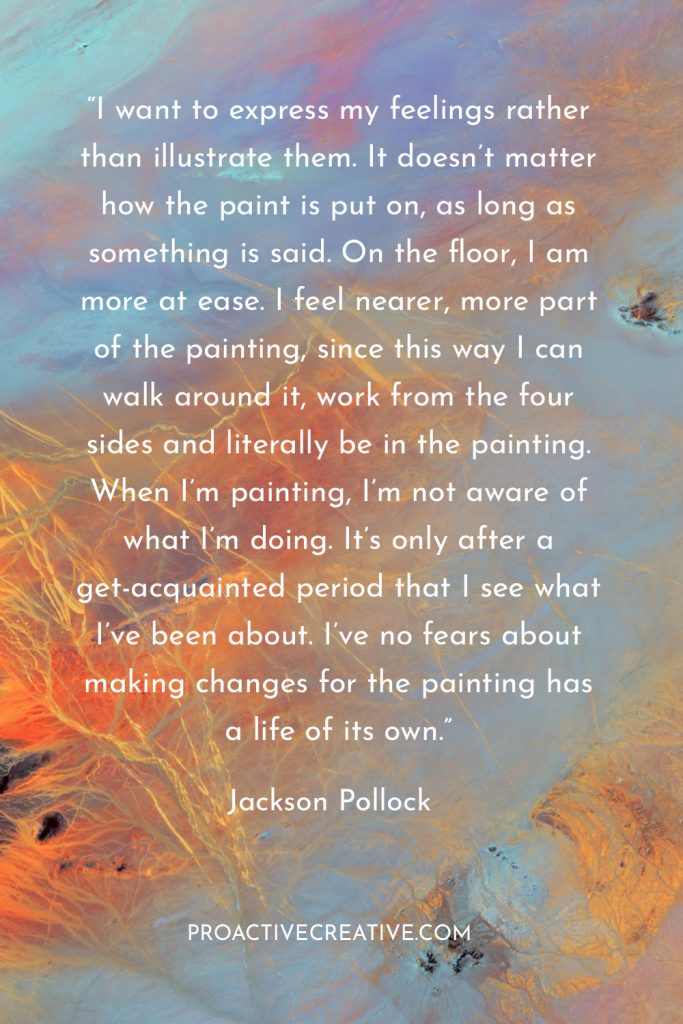
7. Nancy McIntyre
“What do I want to say with my art? Celebrate the human, the marks people make on the world. Treasure the local, the small-scale, the eccentric, the ordinary: whatever is made out of caring. Respect what people have built for themselves. Find the beauty in some battered old porch or cluttered, human-scale storefront, while it still stands.”
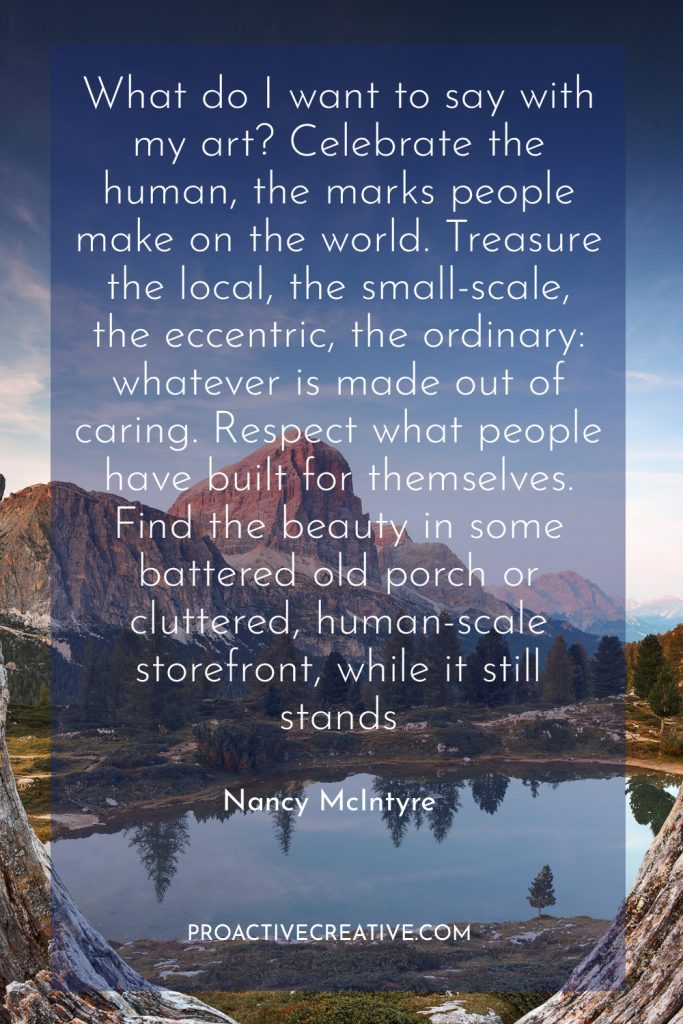
8. Duane Keiser
“My subject matter tends to be those fragmentary passages that reside within the mundane – the in-between spaces of our lives that we see but often do not notice. For me, these paintings are about the pleasure of seeing; of being cognizant of the world around me, and pushing to find an alchemy between the paint, my subject, and the moment. I view each piece as being part of a single, ongoing work.”
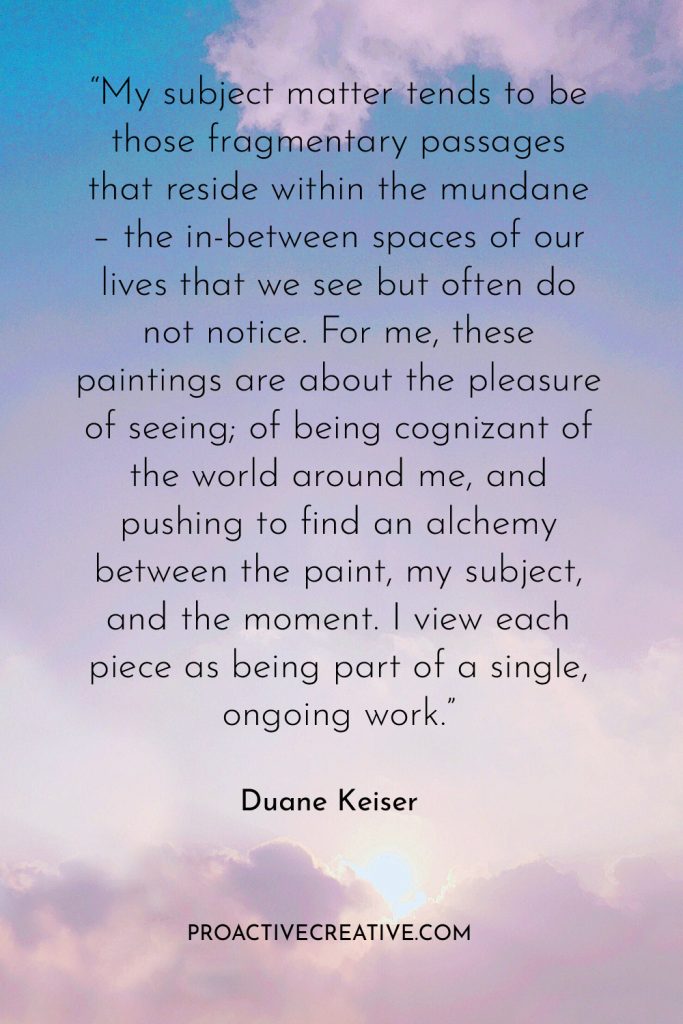
9. Charlene Fuhrman-Schulz
“My subject matter is nature, whether it is a traditional landscape or a bird and flower painting. I use traditional materials, ink, and brush on rice paper, to capture movement and life — making the brush dance and the ink sing. Everything is captured in the spontaneous dance and movement of the brush as it meets the rice paper. There is no going back and correcting when painting with ink and rice paper.”
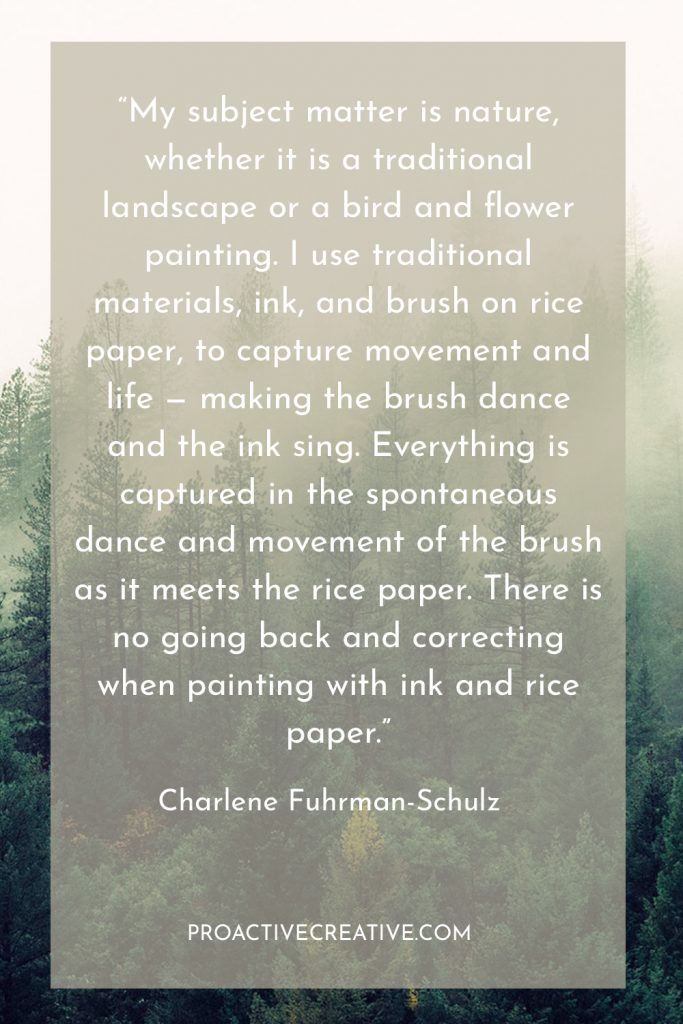
10. Georgia O’Keeffe
“I have but one desire as a painter – that is to paint what I see, as I see it, in my own way, without regard for the desires or taste of the professional dealer or the professional collector. I attribute what little success I have to this fact. I wouldn’t turn out stuff for order, and I couldn’t. It would stifle any creative ability I possess.”
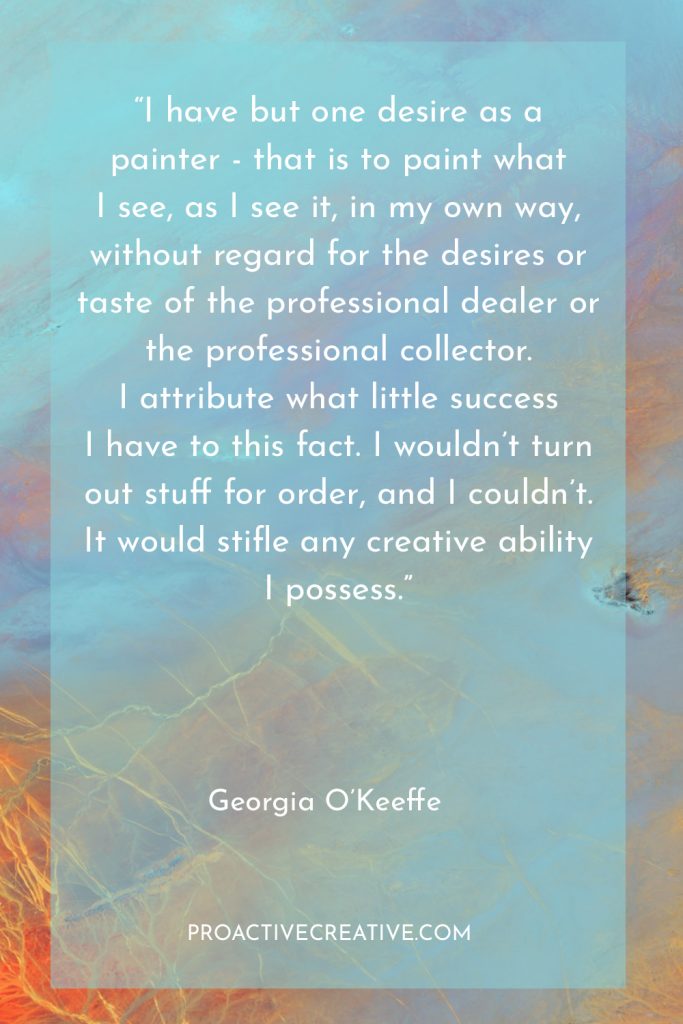
What is an Artist Statement?
Every artist needs to write an artist statement at some point. But, what is it exactly?
An artist statement gives insight into the artist’s process and creative decisions. It can also explain the themes, ideas, and vision of the artist. You can think of it as an initial introduction to yourself and your work to give a great first impression!
Artist statements officially date back to the 1990s. But while they haven’t been around a long time, artists have always tried to define and explain their work.
These statements can vary in length from a few sentences to a page or more. Each statement will differ, but you want yours to be memorable and easy to understand.
Most importantly, it should help people to understand your work.
Artist statements are used for many reasons. You may use yours when applying for grants, submitting a portfolio, or for PR and press mentions. It can also appear on your website.
So, it’s an essential document you’ll need to create. It’s key to growing your following and building a successful career as an artist.
Writing an artist statement can also help you to get clear on your overall vision and values. You might need to spend some time reflecting on what your art means to you.
And yes, it does mean you’ll have to put down the paintbrush briefly. But with these tips, you’ll know exactly how to write your artist statement.
Once it’s written, you can use the same statement again and again. If your artwork evolves over time, you may want to update it slightly. But you’ll have already done the hard work researching, planning, and writing it.
How to Write an Artist Statement
Writing an artist statement sounds daunting, but it doesn’t have to be difficult.
Here are my simple steps for crafting an engaging and effective artist statement! These tips will take you from a bland statement to an amazing artist’s mission statement.
Use simple language
Don’t overcomplicate your statement or use very academic language. That can put people off reading it. Your statement must be powerful and accessible to everyone.
Use active voice and 1st person perspective
I always recommend using the active voice as it comes across as more confident and powerful. Avoid wishy-washy phrases like:
- I try to
- I want to … in my work
Instead, switch it to active voice. Instantly, you’ll have a more interesting and captivating statement.
Using 1st person perspective also ensures that your statement is clear and direct.
Keep it short and sweet
You want to grab the reader’s attention and hold their interest. Avoid an artist statement that is several paragraphs (or pages!) long. A short artist statement is more powerful. So, it should be concise and to the point, without any filler.
Condense what you want to say down into as little as possible without losing the meaning. Your artist statement should be short enough to quote!
Ask yourself questions
Your statement allows you to provide a greater understanding of your creative choices. It can give a window into your thought process, so people can take more from your art.
But you need to ensure you include this information in your statement. Otherwise, you’re missing an opportunity.
One effective method is to think about what people might want to know from you. What questions do you get asked in interviews?
Here are a few questions you could ask yourself:
- What do you want to achieve with your art?
- How do you create your artwork?
- What type of artist am I?
- How does the process, medium, or technique affect the work?
- What does the reader need to know to understand your artwork?
- What emotions do you want to invoke in the reader?
- Who has influenced you in your artistic career, and particularly in this work?
- Who or what are you addressing in this artwork?
- What else do you want your audience to know?
- How does this work relate to your other works?
- What is your art philosophy?
- How does your artwork fit into the history of art?
Don’t worry – you don’t have to answer all these questions in your statement. You can decide which ones make sense. Remember that short and sweet is better than long and dry – you want to get people interested in you!
Once you’ve identified what people want to know about you and your art, you can consider your responses.
Do your research
A great way to get inspiration for your artist statement is by looking at other examples. You can read up on how the old masters or contemporary artists describe their work.
Doing some research will help you understand how to structure your statement. It can also give you food for thought to delve deeper into the meanings of your artwork, too!
If you’re still struggling, there are artist statement templates you can use to get you started. A template will help you build your statement’s structure so that you can concentrate on the details.
Step away and come back later to edit
It’s easy to get caught up in the details and overthink something as important as an artist’s statement. This document is meaningful and may provoke lots of thoughts or emotions.
If you find yourself writing and editing, again and again, take some time to step away. Any piece of writing benefits from a fresh eye. When you work on something for a long time, it’s easy to miss any minor details or mistakes.
I always recommend coming back another day to read through and make any final changes.
The Wrap Up
Writing your artist statement doesn’t have to be a painstaking process. Now, you’ve had a look at some great artist statements. With these simple tips, you’re all set to craft your own statement now!
Let me know if you have any questions in the comments below. Go ahead and share your artist statement once you’ve written it, too!
Follow me on Pinterest for more tips, guides, and tutorials for creative professionals!

